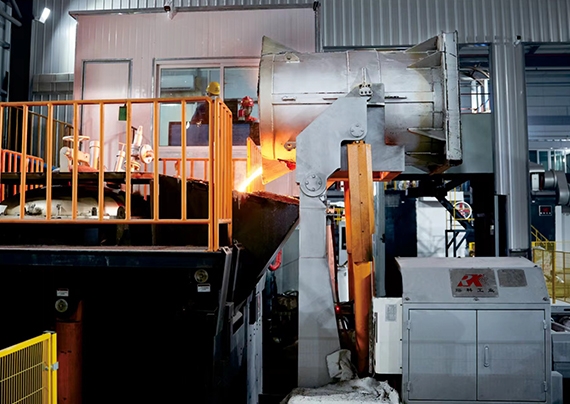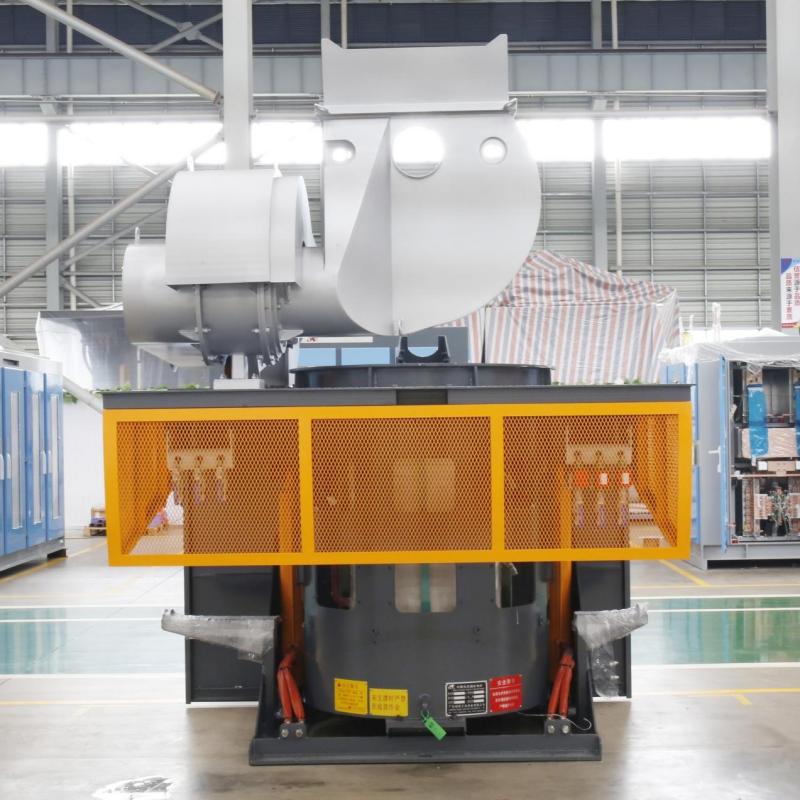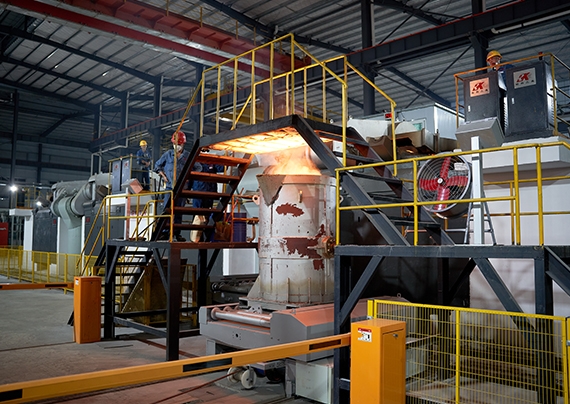
Scrap Steel Induction Furnace: Best Eco-Friendly Solution
In the past few years, there has been a marked rise in the demand for environmentally conscious industrial processes, particularly within the realm of steel manufacturing. Amidst an array of technologies vying to improve sustainability, the scrap steel induction furnace emerges as a notably efficient and eco-friendly method for repurposing steel. Specifically, the Intermediate Frequency Coreless Induction Furnace, produced by Guangdong Rongke Industrial Equipment Co., Ltd., presents advanced technological innovations that not only increase productivity but also significantly reduce environmental degradation.
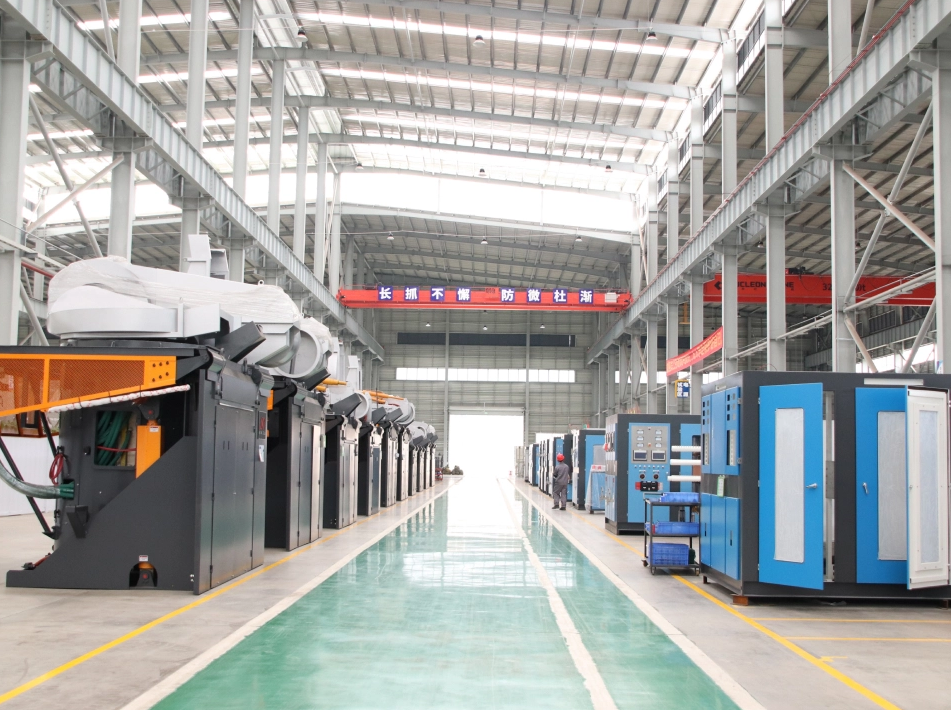
Induction Furnaces: An Environmentally Responsible Choice for Scrap Steel Processing
The adoption of induction furnaces has surged in the steel sector, largely due to their environmental advantages. Unlike conventional steelmaking methods—such as those involving blast furnaces—which are heavily reliant on fossil fuels, Scrap Steel Induction Furnace operates primarily on electricity, thereby generating the necessary heat to melt scrap steel without the need for nonrenewable energy sources. This process leads to a substantial reduction in the emission of greenhouse gases, particularly carbon dioxide.
The Intermediate Frequency Coreless Induction Furnace represents a major leap forward in terms of energy conservation and minimizing ecological harm. A notable feature of this system is its fully enclosed furnace shell, which serves as a secondary protective layer, shielding the magnetic field generated by the induction coil. This configuration not only reduces exposure to magnetic radiation but also mitigates the risk of operational hazards, such as coil ignition resulting from dust contamination.
Moreover, this furnace distinguishes itself by operating at 30% lower noise levels compared to other products in the industry, thus fostering a quieter and more comfortable work environment for personnel. Such a harmonious blend of noise reduction and enhanced environmental safety renders this furnace an ideal option for steel producers with sustainability concerns.
How Scrap Steel Induction Furnace Enhances Energy Efficiency in Steel Recycling
Energy efficiency has become a key focus in modern steel production, particularly as energy costs continue to rise and stringent environmental policies are introduced. In this context, induction furnaces, and specifically the Intermediate Frequency Coreless Scrap Steel Induction Furnace, excel in maximizing energy efficiency. These furnaces are designed to convert electrical energy into heat with minimal wastage, which offers a clear advantage over older methods that depend heavily on the combustion of coal and other fossil fuels.
The high efficiency of these furnaces can be attributed, in part, to the magnet yoke technology integrated into their design. The magnet yoke, crafted from cold-rolling directional silicon steel sheets of exceptional quality, plays a vital role in limiting magnetic losses. With magnetic losses restricted to less than 105, and a magnet yoke coverage rate surpassing 70%, this design effectively channels the magnetic field towards the molten steel, thereby enhancing the furnace’s overall thermal efficiency.
Additionally, the use of TU1-grade oxygen-free copper coils—sourced from Chinalco Luoyang Copper Co., Ltd.—ensures that the system maintains optimal energy transfer while minimizing heat loss. The incorporation of double coil technology further bolsters the furnace’s energy-saving potential, positioning it as a top-tier choice for industries prioritizing both sustainability and operational cost-efficiency.
Key Advantages of Employing Scrap Steel Induction Furnace in Scrap Steel Recycling
The adoption of induction furnaces for the recycling of scrap steel brings with it a multitude of advantages, especially in the case of the Intermediate Frequency Coreless Induction Furnace.
1. Reduction of Harmful Emissions
One of the foremost benefits of using induction furnaces is their ability to reduce the emission of harmful pollutants. By relying solely on electricity for operation, these furnaces bypass the high levels of carbon dioxide and sulfur emissions commonly associated with traditional steelmaking techniques. The design of the fully enclosed furnace shell also contributes to the reduction of airborne contaminants, such as dust and particulate matter, resulting in a cleaner and safer working atmosphere.
2. Enhanced Safety and Reliability
In the realm of steel production, safety is paramount, and Guangdong Rongke’s induction furnaces stand out due to their advanced IDE furnace leakage alarm systems. These systems, which have received patented design approval and EU CE safety certification, offer real-time monitoring and detection of potential leaks. The mechanism works by detecting the seepage of molten iron and triggering alarms through current and voltage detection circuits, allowing operators to address any issues before they escalate. This proactive approach to safety significantly minimizes the risk of accidents, ensuring not only a safer working environment but also greater reliability in operations.
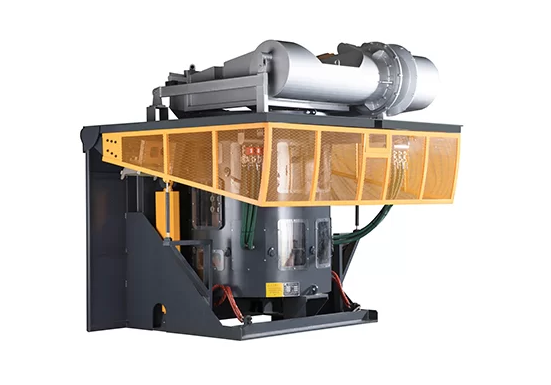
3. Virtually Maintenance-Free Design
Thanks to its forward-thinking design, the magnet yoke serves both as a support structure and a cooling mechanism, effectively rendering the system maintenance-free. The water cooling system, which runs along both sides of the yoke, ensures an evenly distributed cooling effect, thus prolonging the furnace’s operational lifespan. This maintenance-free feature allows manufacturers to maintain uninterrupted production, optimizing throughput and reducing downtime.
The Contribution of Induction Furnaces to Reducing Steelmaking Emissions
The environmental repercussions of steel production remain a pressing global issue, with conventional production methods contributing substantially to air pollution and the generation of greenhouse gases. Induction furnaces, as an eco-friendly alternative, are playing an increasingly pivotal role in minimizing these emissions.
1. Eliminating the Need for Fossil Fuels
Unlike their traditional counterparts, induction furnaces, such as the Intermediate Frequency Coreless Induction Furnace, utilize electricity rather than fossil fuels. This shift effectively eliminates the direct emissions generated by the combustion of coal and natural gas, leading to significantly lower carbon footprints. Moreover, as renewable energy sources become more widely adopted, the environmental impact of induction furnaces is poised to decrease even further, making them a crucial component in the transition to green steel production.
2. Effective Control of Magnetic Radiation
Another innovative aspect of the Intermediate Frequency Coreless Induction Furnace is its capacity to regulate magnetic radiation. The fully enclosed furnace shell serves as a secondary shield, effectively reducing magnetic radiation by 90% compared to similar technologies. This level of control ensures that the furnace remains well within national safety guidelines, further reinforcing its position as an environmentally sound option.
3. Comprehensive Dust and Pollution Control
In addition to controlling magnetic radiation, the design of these induction furnaces plays a vital role in curbing dust and pollution. The furnace’s fully enclosed shell prevents dust from entering the coil chamber, thereby reducing the likelihood of ignition and contamination. The system’s 360-degree dust hood efficiently captures any stray fumes or particulates, contributing to a cleaner and healthier work environment.
The Intermediate Frequency Coreless Scrap Steel Induction Furnace: A Technological Marvel in Safety and Efficiency
Guangdong Rongke’s Intermediate Frequency Coreless Induction Furnace is a state-of-the-art solution, incorporating cutting-edge advancements in both safety and technological performance. The furnace body is equipped with an IDE full-time and all-round furnace leakage alarm system, which provides early warning of leaks by monitoring the leakage current when molten iron comes into contact with the detection electrodes. This highly sensitive system is capable of triggering alarms when molten iron is as close as 2 cm from the coil, ensuring operators can take swift action to prevent potentially hazardous situations.
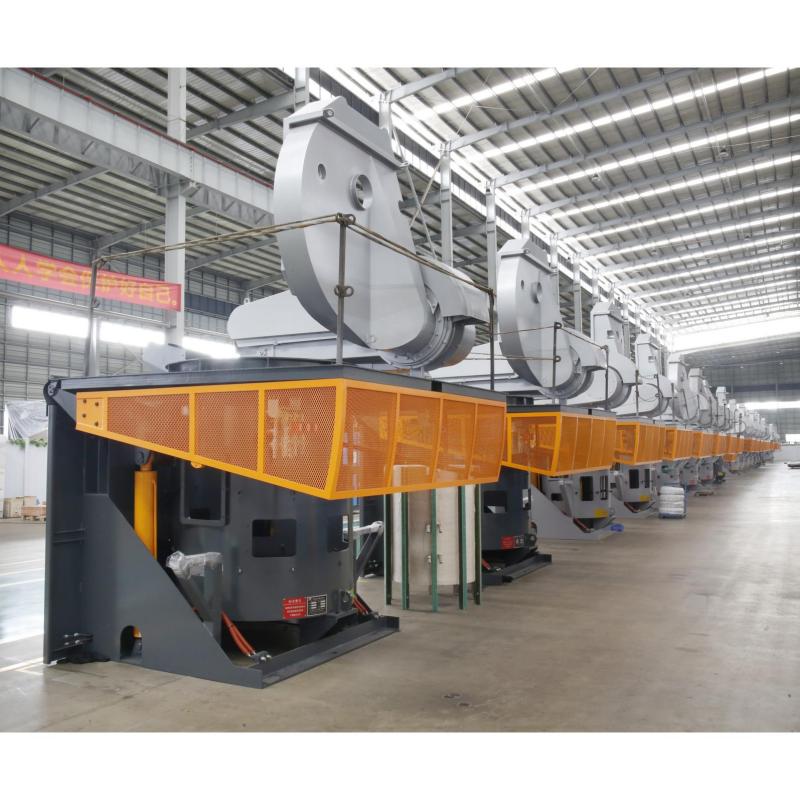
1. Robust Supporting Systems
This furnace is also equipped with a robust supporting infrastructure that ensures stable, uninterrupted operation. The tilting furnace drive system, combined with the cooling and dust control systems, allows for seamless functionality. The furnace tilts smoothly thanks to double hydraulic rods, while the enclosed distilled water cooling system—monitored for both temperature and pressure—ensures optimal performance and reliability.
2. Meticulous Attention to Quality
Guangdong Rongke takes great care in ensuring that every aspect of the Intermediate Frequency Coreless Induction Furnace meets rigorous quality standards. From the initial design concept to the final manufacturing phase, each component is subjected to stringent inspections, guaranteeing long-lasting durability. The furnace shell, constructed from heavy-duty materials and welded using advanced techniques, ensures a long service life, reducing the need for frequent maintenance and improving safety for operators.
Conclusion: The Growing Importance of Eco-Friendly Induction Furnaces in Steel Recycling
As industries continue to prioritize sustainability, the significance of eco-friendly technologies like the Intermediate Frequency Coreless Scrap Steel Induction Furnace will continue to rise in the steel production sector. With features such as reduced emissions, energy conservation, enhanced safety, and near-zero maintenance, these furnaces represent the future of steel recycling.
By adopting this induction furnace technology, steel manufacturers stand to not only lower their environmental impact but also improve operational efficiency and safety. Guangdong Rongke Industrial Equipment Co., Ltd. is at the forefront of this revolution, offering top-tier, environmentally conscious solutions that meet the growing demands of modern steel production while aligning with global sustainability goals.


